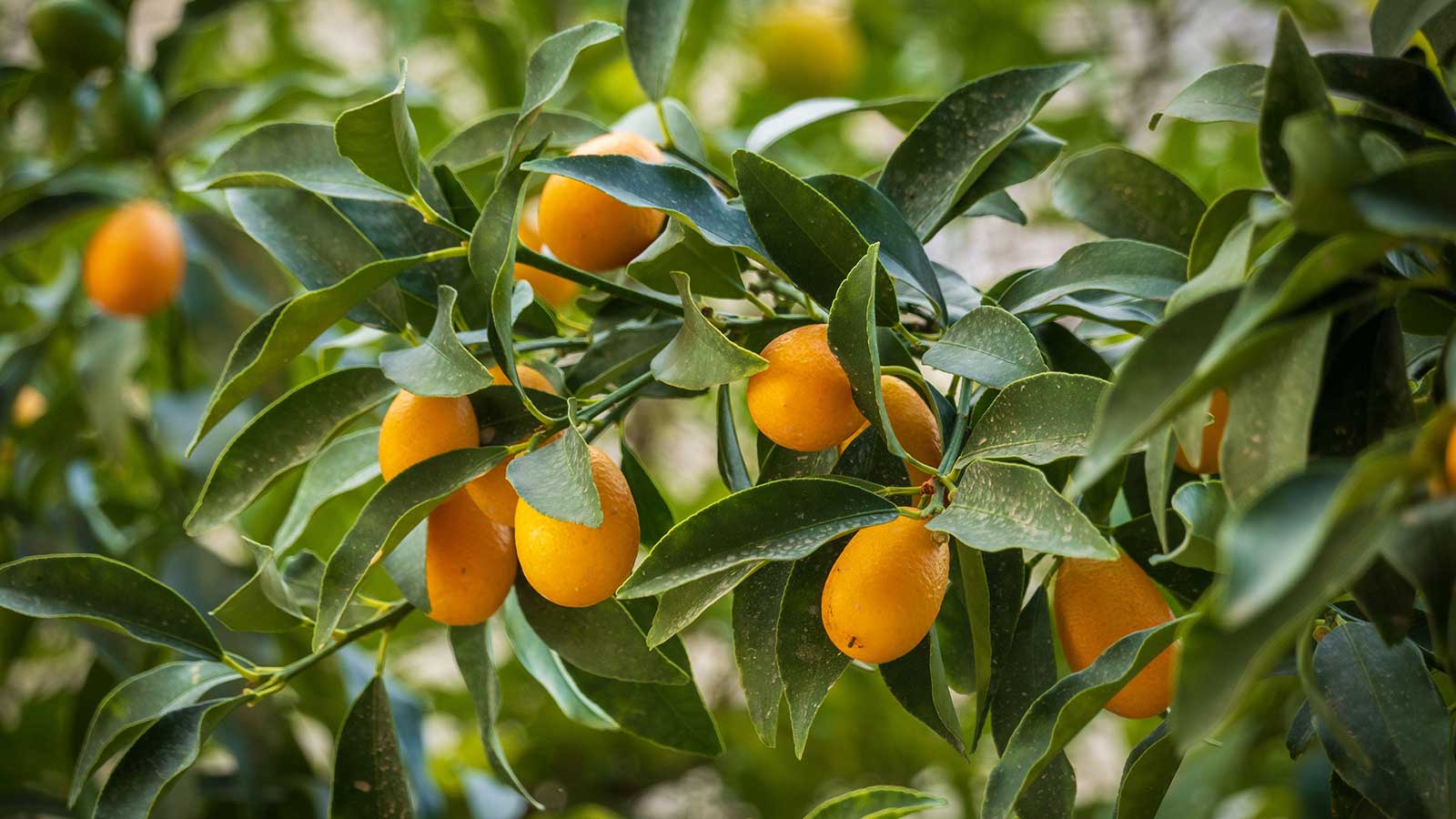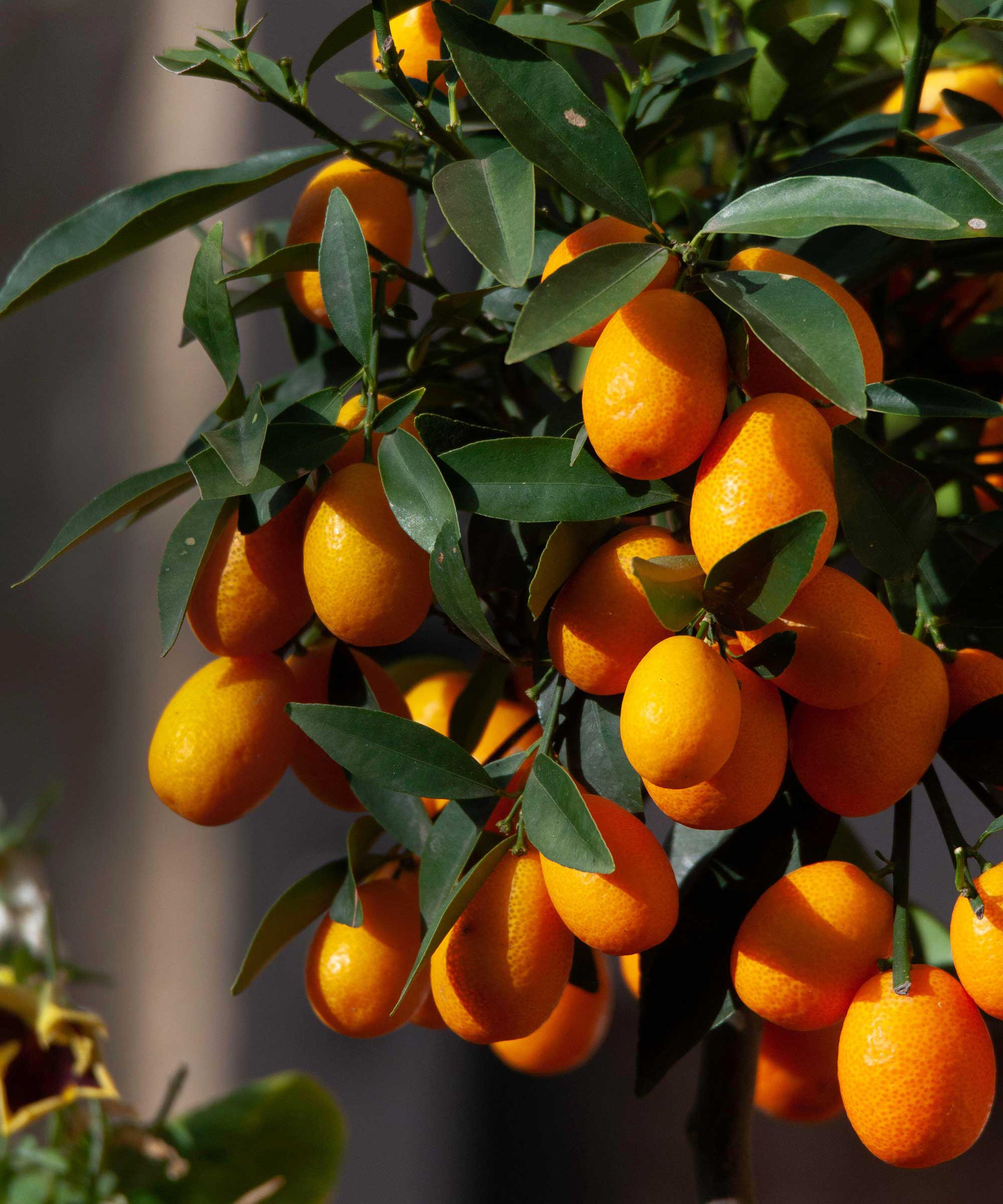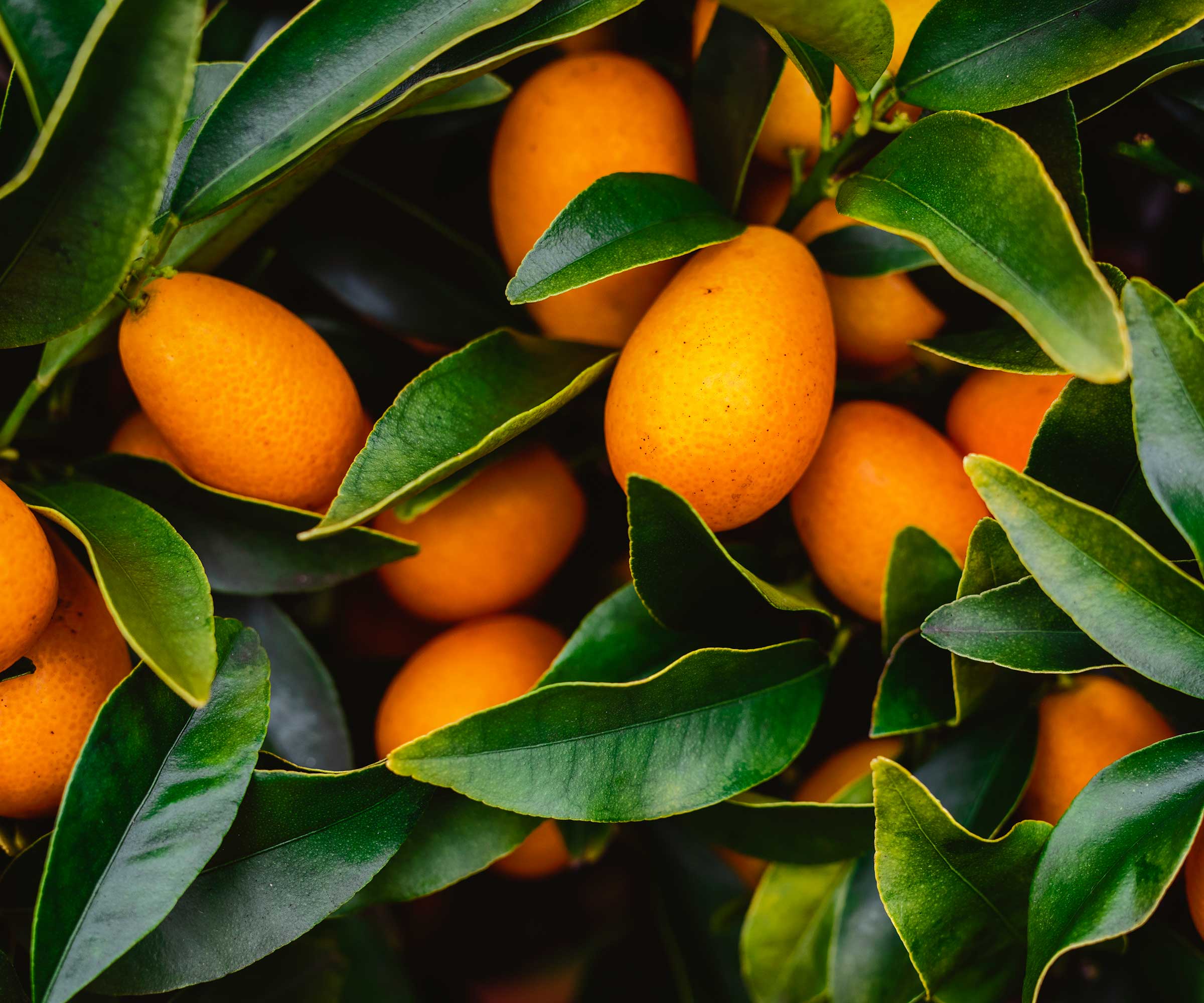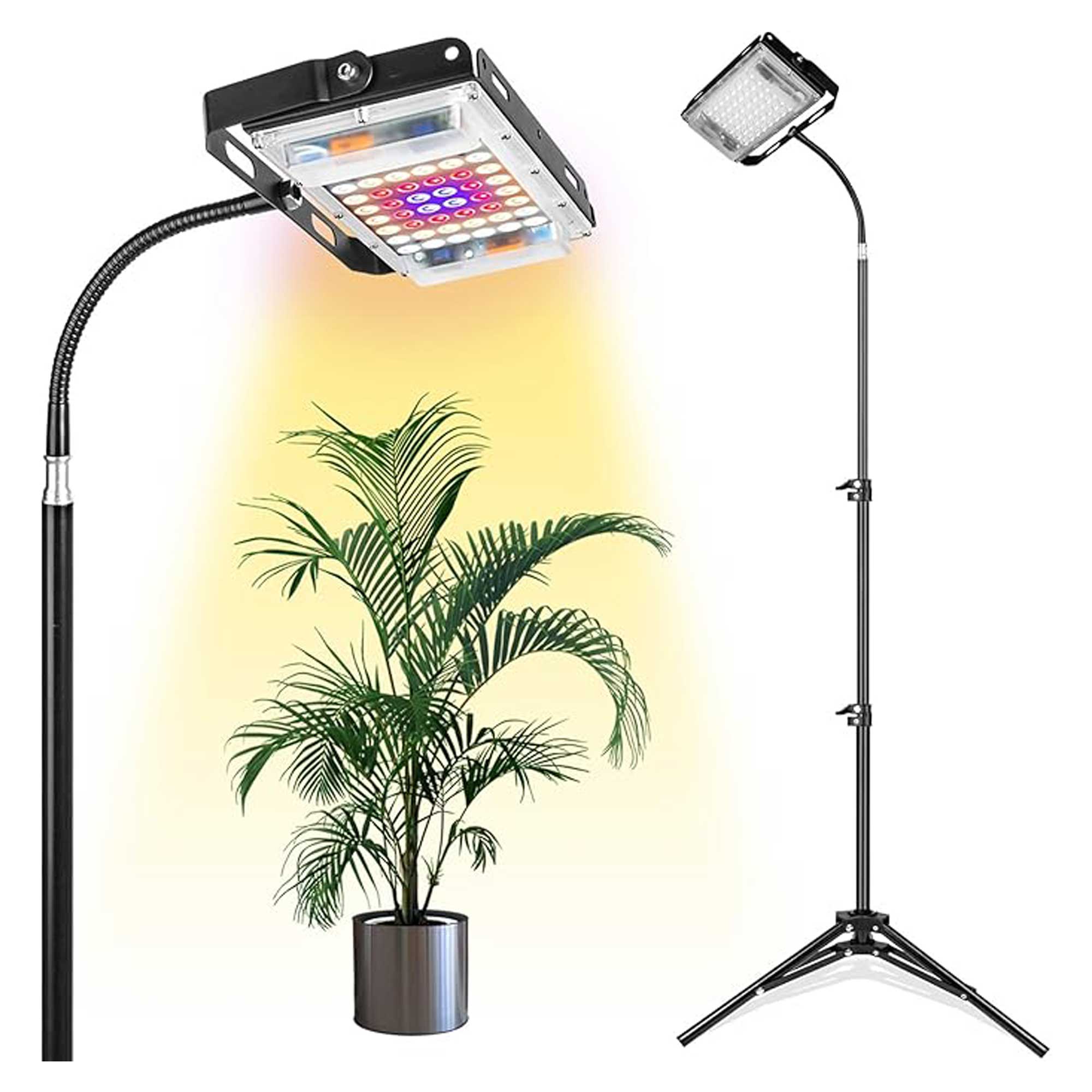How to grow a kumquat tree indoors – an expert guide to these charming citruses
Enjoy fragrant flowers and juicy fruits with this practical guide, including tips on watering, pruning, and getting the lighting right


Kumquats are adorable citrus trees with evergreen leaves, fragrant flowers, and tiny, tangy fruits reminiscent of mini oranges. They are suited to hardiness zones of 9-11, but like many citruses, they will grow happily indoors if conditions are right.
Perhaps surprisingly, kumquat fruits have edible skin (it's actually sweeter than the flesh). They can be eaten raw, candied, cooked into baked goods, or used to make marmalade. The trees, which are compact in size, are self-fertile, which means you'll only need one to enjoy a harvest.
I turned to plant-care experts for advice on looking after these citrus trees at home. Below, you'll find their tips for growing success, including essentials on watering, fertilizing, and pruning.

Kumquats are compact indoor trees
How to grow kumquat trees indoors
Indoor trees always make a statement, but there are a few things to bear in mind to keep them looking their best.
Growing habits for indoor kumquat trees

The fruits have edible skin
'To successfully grow a kumquat indoors, it all starts with selecting a variety ideal for growing in containers,' says Amy Enfield, a senior horticulturist at ScottsMiracle-Gro. Her recommended examples include 'Fukushu' and 'Nagami', as well as 'Centennial Variegated' which has variegated leaves and striped fruit. You can shop for 'Fukushu' and 'Nagami' kumquats from Fast Growing Trees.
While kumquat trees outdoors can grow up to about 10ft (depending on variety), note that indoor, pot-grown ones will reach shorter heights.
Growing guide for kumquat trees indoors

Like all citrus trees, kumquats need plenty of sunlight
Soil: Justin Hancock, a Costa Farms horticulturist, says you can use just about any general-purpose potting mix for growing these trees indoors. It needs to be labeled for use in containers, he highlights, as landscape soil may not drain properly, especially in larger pots. 'You can also use potting mixes formulated for citrus plants, but it’s not necessary if you’re careful not to overwater.'
Design expertise in your inbox – from inspiring decorating ideas and beautiful celebrity homes to practical gardening advice and shopping round-ups.
Light: Nastya Vasylchyshyna of Plantum says that kumquats require 8-12 hours of daylight for optimal growth, and warns that a lack of light causes the leaves to remain small and will hinder flowering and fruiting. Amy says, 'The sunniest windows in your home are south- or west-facing; however, during the winter, even those windows may not provide enough light. So, during low light times of year or if sunny windows are limited in your home, supplement with grow lights which provide the full spectrum of light fruiting plants need for healthy growth.'
Watering: 'Water your kumquat tree when the top two inches of soil feel dry to the touch,' recommends Amy. The leaves will begin to curl inward when your kumquat plant is too dry, she adds, while overwatering leads to water-logged soil which can cause root rot.
Fertilizing: 'Most people find it’s best to fertilize their kumquat trees in spring and summer because there’s more light and warmer temperatures to fuel plant growth,' says Justin. 'The more it grows, the more nutrition it absorbs from the soil.'
You can use time-release or water-soluble fertilizers. Time-release ones can be applied as infrequently as once or twice a year, he explains, or as frequently as the label on the packaging recommends, depending on how much and how fast you want to encourage your kumquat to grow. Water-soluble ones usually come as liquids or powders you mix with water and then use when you irrigate your plant, he continues, noting how it’s important to read the instructions for application frequency. 'While you can always fertilize less than the product packaging says, never use more fertilizer than the packaging advises. Too much fertilizer can create a buildup of nutrient salts that damage plant roots. In severe over-fertilization, it could even kill your kumquat.'
Pruning: 'Indoor kumquat trees require less pruning than those grown outdoors,' says Nastya. She recommends giving it a trim every spring, once it resumes active growth, by removing leggy shoots and bare twigs to shape the tree and encourage new growth. 'Make angled cuts just above the leaf nodes,' she advises. 'The key is to avoid pruning during the flowering period, as it can stress the plant.' Dead or unhealthy branches can be removed throughout the year if necessary, she adds.
Toxicity: Kumquats are edible fruits for humans, but like any homegrown crop, they should be washed before consumption (and avoid those that have been treated with chemical pesticides or herbicides). It's generally advised to prevent pets from eating citrus fruits and plants, as they can cause stomach upset and other issues.

Amy has 30 years of experience in the lawn and garden industry and has been with ScottsMiracle-Gro for 12 years. She has a BS and MS in Horticulture from Michigan State University and a PhD in Plant and Environmental Sciences from Clemson University.

Justin Hancock is a Costa Farms horticulturist with over 25 years in the industry. A plant enthusiast and educator, he has a degree in horticultural science and has worked in garden centers and botanical gardens, as a garden designer, and in garden publishing (including at Better Homes and Gardens). He has experience gardening across the country, from Minnesota to Oregon to Miami. Justin is also co-host of the Costa Farms podcast Plant Rx.

Nastya is a professional botany expert for the Plantum app that helps identify plants and plant diseases and provides care recommendations. Her specialization is plant morphology, phytopathology, and plant physiology.
FAQs
What size container should you use for an indoor kumquat tree?
'The size of your kumquat tree when you purchase it will determine what size container you need,' says Amy. 'An eight-inch container with drainage is often ample for a young kumquat tree and will usually provide enough growing space for up to four years.'
Eventually, the time will come to repot your plant into a larger container. 'Mature trees may need a container that is 12-18 inches in diameter, depending on the variety you’re growing,' Amy says.
How can you encourage an indoor kumquat tree to produce fruit?
Amy says, 'Your kumquat tree may need a few years after planting before it will start to produce flowers and ultimately fruit.
'Small, white flowers will form in late spring through early summer. When pollinated, these flowers will eventually develop into fruit which ripen in late fall and winter.'
While outdoor kumquat trees rely on pollinators to fertilize the flowers, Amy notes how indoor kumquats need to be pollinated by hand. You can do this by using a small, soft-bristle paintbrush to move the pollen from the male flowers to the female flowers, she says.
If you're interested in growing more citrus fruits at home, our guide on how to grow a lemon tree indoors has lots of useful tips.

Holly started writing about gardening five years ago, and she is a regular contributor to Homes & Gardens. She has also written many gardening features for Woman & Home and Real Homes, too. She has previous experience as a professional gardener, where she helped to plant and maintain private gardens. Holly has also looked after allotment plots over the years and loves to grow her own flowers and veggies from seed. In her spare time, she enjoys visiting local gardens, botanical drawing, and tending to her ever-growing collection of houseplants.
